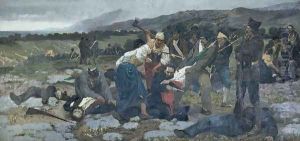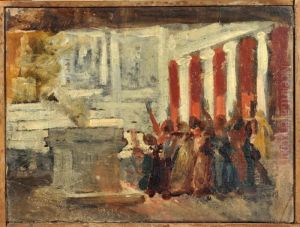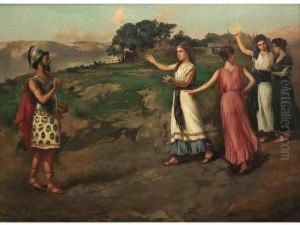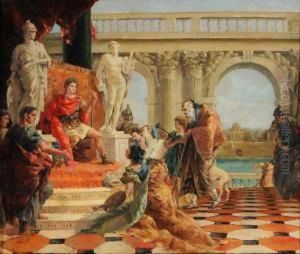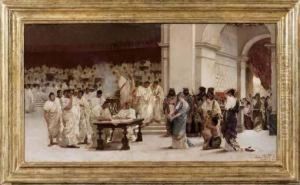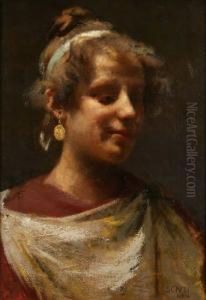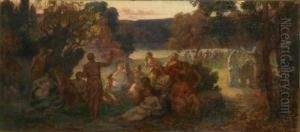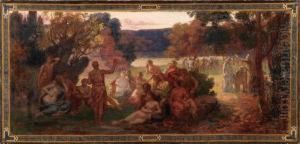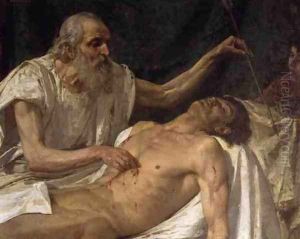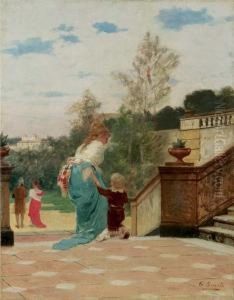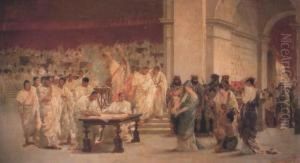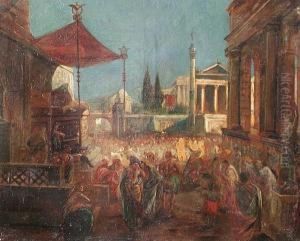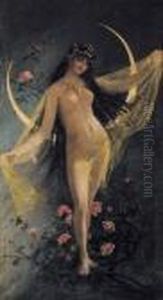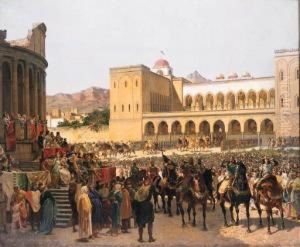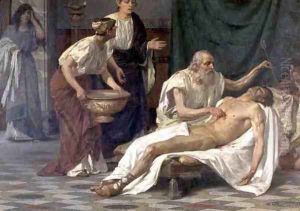Giuseppe Sciuti Paintings
Giuseppe Sciuti was an Italian painter known for his historical and classical themes, as well as his dedication to the academic style of painting that was prevalent throughout the 19th century. Born on October 21, 1834, in Zafferana Etnea, a small town near Catania in Sicily, Sciuti showed an early talent for art that led him to pursue formal studies.
Sciuti's education in the arts began at the Royal Institute of Fine Arts in Naples, where he studied under the guidance of distinguished painters of the time, such as Domenico Morelli and Filippo Palizzi. These teachers were instrumental in shaping Sciuti's early style, which was characterized by precise draftsmanship and a strong narrative quality. Sciuti's works often reflected his deep interest in history and classical antiquity, a passion that was common among his contemporaries adhering to the academic tradition.
In 1861, Sciuti won a scholarship that allowed him to travel to Rome, which was then a hub for artists seeking to study the masterpieces of the Renaissance and classical antiquity. There, he continued his artistic development and began to make a name for himself with his meticulously composed history paintings. Sciuti's art was marked by its grandeur and attention to detail, often capturing dramatic moments from history with a sense of realism and emotional intensity.
Throughout his career, Sciuti enjoyed considerable success and recognition. He was commissioned to create large-scale works for important public and private buildings, including frescoes and murals. Among his most notable works are the frescoes in the Palazzo dei Normanni in Palermo and the decoration of the Vittorio Emanuele II National Monument in Rome. Sciuti also received honors from the Italian government and participated in major exhibitions, both in Italy and abroad.
Despite the shift in artistic tastes towards the end of the 19th century, with the rise of impressionism and post-impressionism, Sciuti remained committed to the academic style. He continued to paint and exhibit his works until his later years, passing away on April 7, 1911, in Catania. Today, Giuseppe Sciuti is remembered as a key figure in the Italian academic art movement of his time, and his works are preserved in various Italian museums and collections, serving as a testament to his skill and dedication to the classical ideals of beauty and historical narrative.
